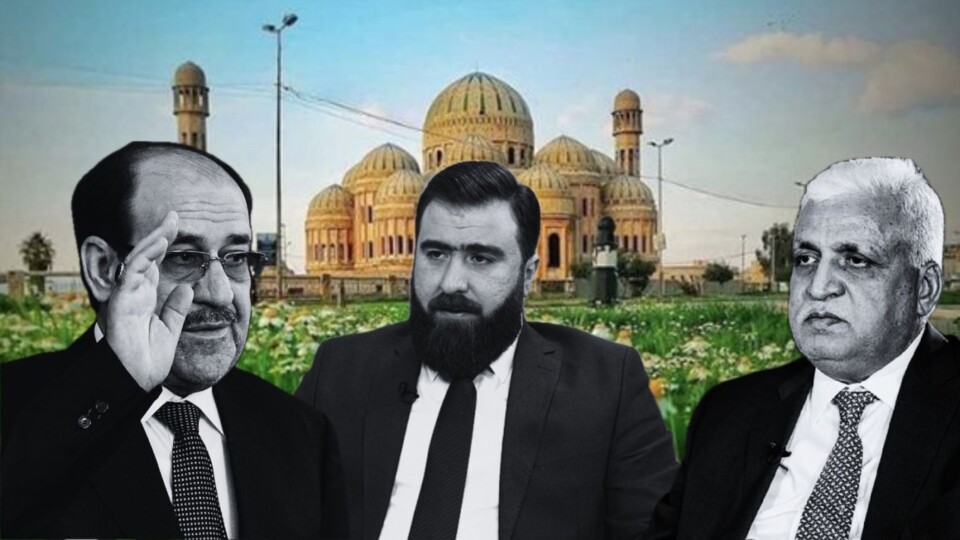

Myasar Al-Adani and NIRIJ team – Translated by Walaa Rayya:
“My mom used to wake me up every morning by playing with my hair to go to school. I always had this dream and then I woke up to Abu Omar’s screaming to find myself at the Caliphate Cubs camp waiting for severe punishment if I didn’t rush to join the rest of the children who were preparing for the fight.
A few months earlier, Ayman Khalil, who was barely 10 years old, was a third-grade student at a school made from mud in the Seba Sheikh Khodor complex.
But everything changed as ISIS fighters entered Sinjar on August 3, 2014, and committed mass killings and abductions.
On that day, Ayman, along with 23 members of his family, was in the grip of the organization’s fighters, 19 of them took his freedom back at various times of the organization’s control period of Nineveh, Anbar, and a large area of Syria. Ayman was being held captive for five years and transferred from one city to another while four members of his family remain unaccounted for.
Those years left deep scars in his soul and body. His family, who were fortunate enough to find him in Syria and paid a large sum of money for his liberation, fear that these scars stay with him all his life.
“It was moments filled with pain and horror stories that cannot be erased,” said one of Ayman’s friends.
The Sinjari boy, who keeps quiet all the time and prefers to give short answers, doesn’t remember much details of his life before announcing the last firman that affirmed the control of the Islamic State over Sinjar which has been taken by ISIS in few hours after the withdrawal of Iraqi and Peshmerga force who left behind the people at the mercy of an organization that considered them as blasphemers and fire-worshippers.
“Hours after hearing the sound of bullets and bombs, my family knew that the area had fallen and we had to flee. We headed towards the mountain in a car, but in the Sulakh area, we were trapped and arrested. 18 people took us to Tal Afar, while they were laughing and mocking us.” He said.
That day, tens of thousands of Yazidis fled into the Sinjar mountains to escape the liquidation operations, while some Kurd Muslims fled towards Mosul and the Kurdistan region fearing for their lives amid chaos, especially since many of them belonged to the Kurdish Peshmerga forces and were a direct target of IS.
However, thousands of other Yazidis did not have the opportunity to escape, which made them fall into the hands of the Islamic state members whose leaders acted according to their jurisprudence. Some of them permitted the killing of all the men and boys, and others saw the possibility of converting to Islam, but in most cases, it ended with liquidation, captivity, and kidnapping. Within days, more than 1,300 Yazidi were killed and more than 6,400 people, mostly children, and women, were kidnapped.
With tears in his eyes, Ayman remembers his early days in captivity, when he suddenly found himself alone without his family and recruited in the ranks of the organization. “When I was ten years old, I became a fighter in their camps, far from my mother and my village. I woke up every morning to their threats if I did not hurry to catch up with training.”.
His young age and his mother’s pleas did not prevent him from being separated from her. Weeks later, he was transferred to a children’s training camp that included, along with Arab children, dozens of Yazidi children who were prepared to become suicide bombers or fighters in the front lines.
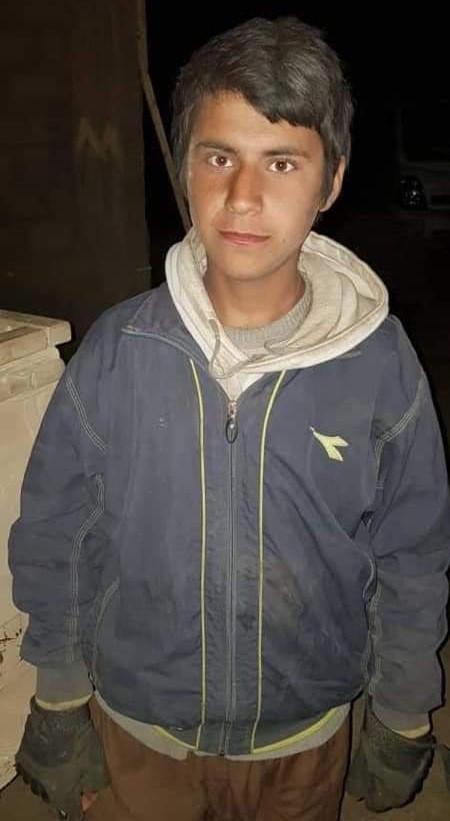
Fighters and suicide bombers
He grabs his mobile, and puts the name of his friend Berhad (a Kurdish name that means memories) as his password, in honor of his memory after he lost him in one of the battles they fought together in Syria. He searches among the pictures for his picture when he and his fellow child soldiers were in IS’s hands.
Ayman does not know what happened to most of the children who received weapons training with him in addition to religious and ideological lessons. “They would divide us into groups, and from time to time they would take some of us into battles to fight to the death or blow themselves up. Some of them suddenly disappeared.” He added, “Maybe they would return to their families in exchange for money.”
Ayman confirms that not all children were recruited against their will. Some of them volunteered in the ranks of the organization, Arabs, and foreigners, whose families brought them from different areas because they believed in fighting to achieve victory or enter heaven. “It was hard to hang out with them because we were in divergent groups, we met only during battles.”
While volunteers for jihad were highly respected, Yazidi children faced all kinds of physical and psychological torture. “They obliged us to perform prayers, memorize the Qur’an, take religious lessons, in addition to training. If they were angry with us for any reason, they would describe us as infidels, children of Satan and fire worshipers, and beat us.” Ayman said.
Sufian Rashid (20 years old) and Barzan Eido (16 years old) had the same experience as Ayman. They witnessed all kinds of threats, torture, and indoctrination in the organization’s training and rehabilitation camps, whether in Nineveh in Iraq or Raqqa and Deir Ezzor in Syria.

Kidnapped and missing persons
Yazidi researchers describe what was happening in those camps as not just a violation of the human right of freedom of opinion and belief but also a form of surrounding humans by conditions in which they become completely submissive, and brainwashed by successive religious lessons.
That is exactly what happened to Ayman, who still remembers what was taught to him even after more than two years since his release. “I can’t forget anything I don’t know if they opened my head or gave me certain pills so that I remember them. Some nights I see them coming back again, stripping me of my clothes and beating me while I scream and try to escape.” He said.
He adds, leaning his back on the pole of his tent, “In the first year after my liberation, I used to wake up in the morning during prayer times and listen to the Qur’an without anybody noticing. I got used to that in the years of recruitment.”
The Directorate of the Affairs of the Yazidi in the Kurdistan region estimates that 6427 Yazidis have been abducted, including 3548 males (men and children), 2869 women and girls.

From Seba Sheikh Khodor to Al-Baghouz
Far from the refugee camp in Sheikhan, and the memories of the years of enslavement that never leave him, Ayman hardly remembers his village, Siba Sheikh Khodor, where he was born and lived his early childhood years. Nothing but an intermittent tape of pictures of his mother, father, and some of his friends and the hours of play in the outer parts of the complex, which included about 30,000 Yazidis, none of them have returned, as the destruction is still all over the complex.
Siba Sheikh Khodor is considered the first line of the Kurdish Yazidi complexes. It is administratively affiliated to the Ba’aj district in Tal Aziz. After the fall of the Baath Party in 2003 and the entry of the Peshmerga, it has followed the Sinjar regime.
Siba Sheikh Khodor was near the Arab regions that were known throughout the nineties by the spread of Salafists, and they become after 2003 a center for takfiri Islamic groups against the Americans and the new regime in the country. This proximity made the town a field for bloody liquidations and massive destruction operations. Two charges were facing the people of Siba Sheikh Khodor, they were accused of being Kurds loyal to the Peshmerga and Yazidi faith believers.
The same groups had attacked on August 14, 2007, with four truck bombs on the Seba Sheikh Khodor and Al-Qahtaniyah complexes, causing massive destruction, killing 320 people and wounding about 1,200 Yazidis.
But its attack in August 2014 was different. Arab and Turkmen militant fighters attacked the Yazidis houses in all Sinjar. In the first hours, there were mass arrests and killings, followed by massive looting. The children were later separated from their families.
“These hours were the hours of the last meeting of hundreds of mothers with their children who were lost forever. Hours filled with stories of immediate executions, eternal absenteeism, messages, screams, and tears, “says Halima Hassan, a writer interested in Yazidi issues.
She added: “The Yazidi community, as well as the international community, spoke about girls, but it forgot hundreds of unaccounted for male children. Most of them may be living in ISIS families until today and raised with another faith that believes in jihad and revenge. ”
Ayman, the brown boy, was taken from his family, village, and surroundings, knew nothing but the Kurdish language and the Yazidi religion at that time, but it became necessary for him to convert to another religion, speak another language, and accept a different societal culture to survive.
Months after the “Firman Day” (the name given by the Yazidis to ISIS’s invasion of their areas), the Yazidi child “Ayman” is mentioned in the records of ISIS as the young fighter “Abu Muawiyah” who wears Afghan clothes. Abu Omar Al-Maslawi, the emir of the organization, who was in charge of the Sharia Institute in Al-Bukamal, Syria, chose that name for him.
“After the kidnapping, I was transferred to the Sharia Institute in Tal Afar, where I stayed for more than a year with about 300 other Yazidi children of different ages. We were all receiving lessons in the Qur’an, faith, reading, writing, and Islamic literature,” said Ayman.
Then the boy was taken to Mosul to prepare him for the post-religious lessons. “I lived there with other children in a large two-storey house from which we were forbidden to leave. We were supposed to be prepared for jihad work, but the area around the place was bombed more than once, so we were taken in large cars to Syria where they distributed us to training camps and the leaders of the organization.”
In Syria, Ayman was trained to use light and medium weapons as well as explosive devices in more than four separate camps, including “Abu Ali camp, Abu Bakr, Abu Musab al-Zarqawi, and Omar al-Shishani camp.” He also worked in the kitchen to prepare food, “There was a set schedule for training, times to eat in the morning and evening, and orientation lessons. We had to respect all rules, or, in case of the smallest violation, we were tortured.”
Ayman had not completed his twelfth year when he was taken to the war fronts, and throw in some battles. “They used to give us a specific duty, such as shooting at a target or monitoring a specific location… I escaped death, but others never came back… I lost five of my Yazidi comrades there.”
Ayman does not know what happened to hundreds of other Yazidi children who accompanied him in Tal Afar, Mosul, Deir Ezzor, and Raqqa.
He never believed that he would survive the hell of successive battles and the bombing that was intensifying on them month after month, but he had the chance to live until the last battles of the organization before its complete collapse in Al-Baghouz in Deir Ezzor, Syria.

Multitasking Camps
Hasso Hormi, a researcher in Yazidi affairs who wrote several books on IS’s methodology of dealing with the Yazidis, including the kidnapped children, says that ISIS has established camps called “The Cubs of the Caliphate” that were characterized by a high level of organization, and they adopted training and preparation programs for children that will make them completely forget their past and eventually become loyal warriors who follow orders.”
Hormi added, “The kids were being prepared psychologically and physically to go to war and even carry out suicide operations. But this was not the only mission they were being prepared for, they were also trained to take on intelligence missions for the benefit of ISIS, and they were called (the eyes).”
Hormi identifies the names and locations of the prominent training camps for children and boys in the “Caliphate State”: Salamiah, Nimrud, southeast of Mosul. Al-Ghazlani camp in central Mosul, Al-Hatra camp south of Mosul, Tal Afar camp, west of Mosul, Iraq, Asbab al-Faruq camp, al-Khalifa camp and al-Sharia camp in Raqqa, Syria.
Training hours in these camps lasted from 8 to 10 hours a day and included physical fitness exercises, the use of weapons, shooting and targeting opponents in different situations, as well as methods of using explosives, breaking into military barracks and residential buildings.
In these camps, children received intensive lessons on the Quran and Islamic sharia that follow the Salafi jihadist doctrine, which imposed the fighting of apostles, the application of sharia law, and the pledge of allegiance to the Caliph.
In addition, the children were forced to watch videos of the beheadings carried out by IS against those who violate its ideas. Sometimes they take children to watch live execution, beheadings, stoning, and throwing from tall buildings.
According to Hormi, “IS tried to brainwash the children and instill the principle of jihad in their minds through these lessons, and through encouragement, enticement, and sometimes threats and beatings, and it succeeded in many cases. We can see the result in the daily killings and revenge that take place in the al-Hol camp in Syria.”
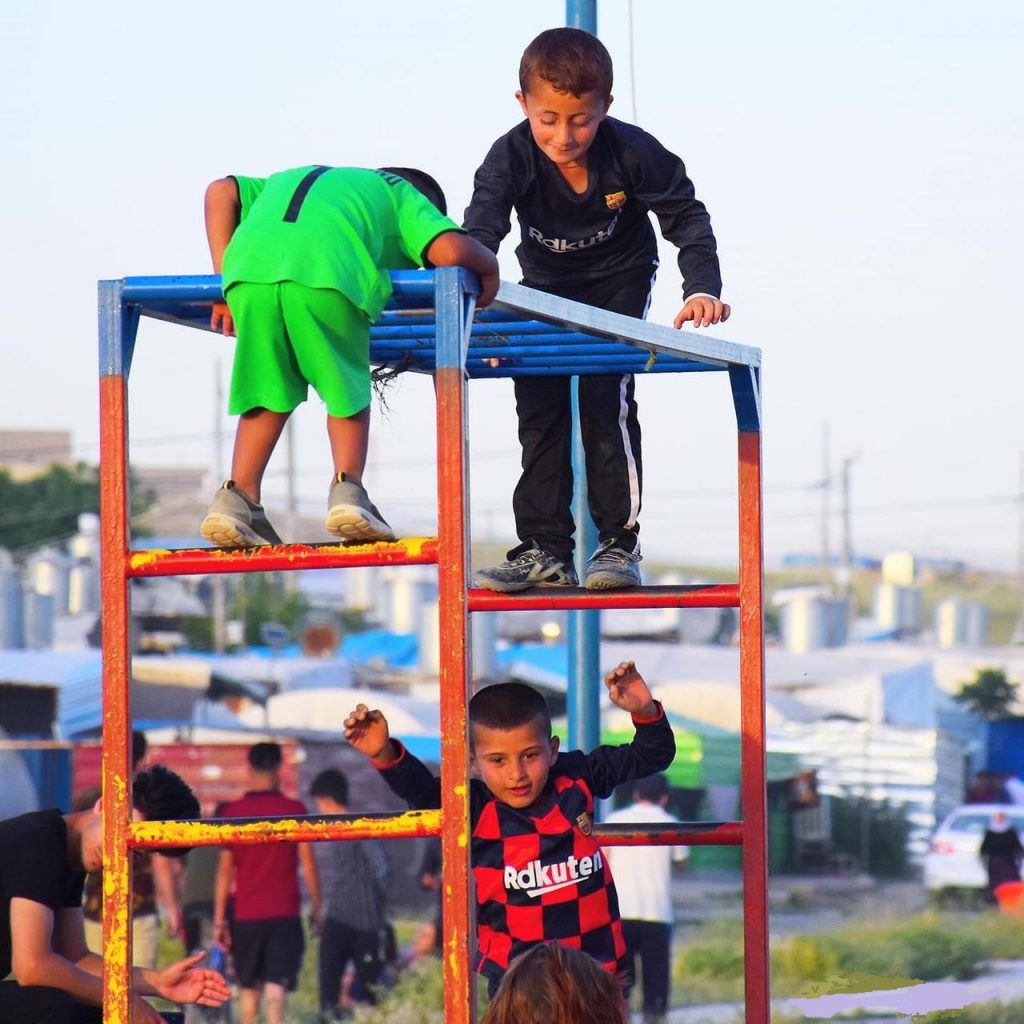
From an abducted child to suicidal fighter
In 2017, an ISIS video was shared on social media showing the two kidnapped Yazidi children, Ayman Elias and Amjad Elias, who were born in Tal Qasab, south of Sinjar. They committed two suicide attacks in Mosul, after receiving intensive training in IS’s camps, from which they came out as Takfiri fighters who were named Abi Khattab and Abi Youssef.
The organization planned to do the same thing with hundreds of Yazidi children who were subjected to what researchers describe as brainwashing operations that made them in the end deny their past, consider their families apostates, reject the Yazidi religion, and do anything that “brings them closer to heaven.”
Sufian Rashid, who was kidnapped from the Solakh area (2 kilometers east of Sinjar) when he was fourteen years old, along with his relatives and younger brother, and was attached to the “lions” camps, recall his suffering during the five years he was deprived of his freedom.
“They separated me from my family and took me to Tal Afar where they forced me to convert to Islam. After months of hunger, pain, and fear of the unknown future, we didn’t know if we were going to be killed or released, they took me to a training camp in Mosul with other Yazidis and later to Syria.” He said.
Rashid, who was called “Abu Aisha Al-Sinjari”, added: “During two years, they taught us the foundations of Islam, and they told us that it is the true religion and following any other religion will lead the person to hell. We did not understand much of what was being said, but we memorize and repeat it to avoid punishment and torture.”
Rashid points out that these lessons were finding their way into the minds of some children, especially the younger ones, “because of that we were afraid to speak in front of them. All of this aims to prepare us for jihad. When they ordered me to participate in the battles, I refused, so I was tortured.” he added.
In the fall of 2017, the place in Raqqa where Rashid was living, was subjected to a missile attack, during which he was seriously injured and taken for treatment in one of the ISIS hospitals. There, they were unable to save his right foot, so they were forced to amputate it.
“During the treatment period, I got to know a Kurdish person who helped me to escape. That was at the end of 2017, and I met the rest of my family who had survived the genocide. In the small tent that brought us together, joy mingled with sad tears over my condition and the loss of my leg.”
Ayman and Sufyan survived and were liberated from ISIS, but hundreds of other Yazidi children are still kidnapped or killed in the battles they were forced to fight or during the heavy bombardment.
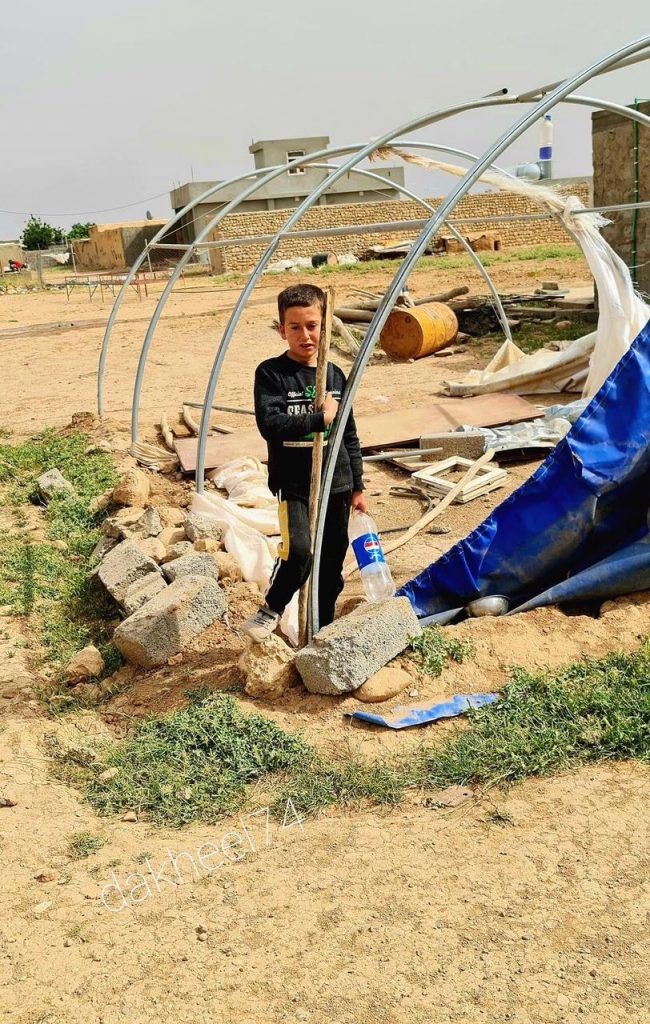
Persons unaccounted for
According to Yazidi activists and organizations working on documentation, more than 1,700 male Yazidi children (out of a total of 6,417 kidnapped Yazidis) fell into the hands of the organization during the invasion of the city of Sinjar, around 950 of them were liberated and the rest is unaccounted for, and their families, with the support of official institutions, are trying to free them or know what happened to them.
Barjas Khader, a 35-year-old activist says, trying to explain the “absence” of these children years after the collapse of IS, “Most of the children were brainwashed in the Lions of the Caliphate camps in Nineveh and various regions of Syria. Yes, some children were killed after being thrown into the war, but others were taken by Arab families in Syria and Turkmen families who fled to Turkey.”
Barjas, who has been working for years to liberate kidnapped children, asserts that he has information and documents about the kidnapped children and audio recordings that show that many of them are in the al-Hol camp and different areas in Syria and Turkey. And they have been there for years”
Barjas, who visited al-Hol camp more than once since the liberation of Baghouz, in search of missing children after collecting information about them and their last appearances, managed within three years to liberate more than 100 children, but the liberation operations slowed down and became more difficult over time. “Every day that passes, the task becomes more difficult,” he said in despair.
Barjas and other activists working in the Foundation for the Liberation of Abductees in the Kurdistan Region get information about the kidnapped children from various sources, including from those who were liberated from time to time.
The office for the rescue of the kidnapped believes that their success in liberating several abductees, even in the recent weeks, and the success of others in escaping from the families of the organization, confirms that hundreds of others are still alive and lives in conditions that do not allow them to reveal their true identities, which requires intensified efforts to rescue them.
Turkey and Al-Hol camp
Nofa Khalaf, 25, who was liberated in June 2020 from al-Hol camp, said “I saw many Yazidi children in the al-Hol camp with Arab families, I know the place of some of them until the day I left, but others changed their places. I don’t know. Perhaps their families managed to escape to other places.”
She added: “There are families who used children as servants even inside the camp. Some of them seem to have managed to get out. I heard from their neighbors that they went to Turkey, especially the Iraqi families who were with ISIS.”
Ido Kojo, 40, a Yazidi refugee in Duhok who lost a number of his relatives during the invasion, says that he has information about his kidnapped nephew. ” I heard that he is in Turkey with the family of an ISIS prince who fled Syria. The prince has disappeared and we don’t know anything about our child, who has been with him for years.”
Kojo gives us numbers that we couldn’t verify indicating that Yazidis (families and activists) managed to liberate about 50 children from Turkey during the last six years. He is certain that there are hundreds of others there, whether with Arab princes of ISIS or with families from Tal Afar, and he called upon the Iraqi government to help to rescue Yazidi children and bring them back from Turkey.
The Kurdistan Regional Government rescued two Yazidi children from Wardiya village in Sinjar, who had been in an orphanage in Turkey for three years. They were abandoned by the “ISIS family” that adopted them after fleeing Syria. This confirms the claims of the families of kidnapped children.
The children were formally recovered during the visit of Iraqi Kurdistan President Negervan Barzani to Turkey in September 2020, with whom they returned to the region at the end of the visit.
According to Yazidi statistics, about 1,300 Yazidis lost their lives during the first day of the invasion of Sinjar, most of them were buried in about 80 mass graves, and hundreds died in the following days. And 2,745 Yazidi children became orphans as a result of the attack.
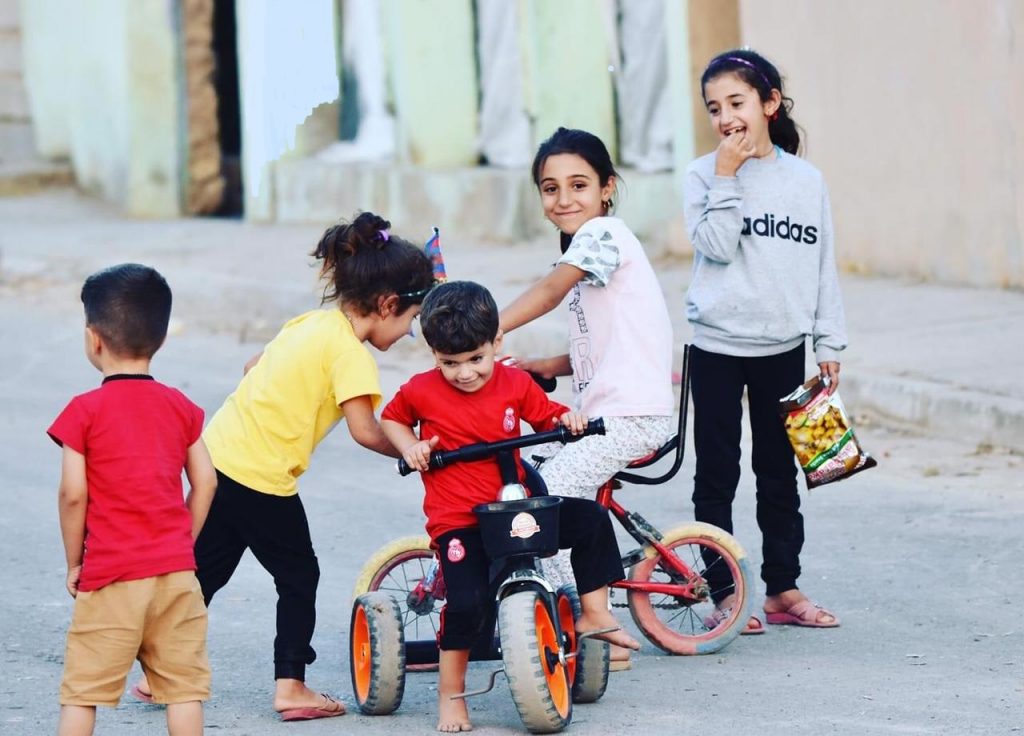
Post-liberation suffering
Even after the liberation of hundreds of Yazidi children, who spent years with ISIS families or joined the caliphate camps, their suffering and the suffering of their families did not end. According to a Yazidi activist, who witnessed the suffering of many returnees “The nightmares, the lessons and the habits of their previous lives followed them, and the years of torture and bitterness of losing their loved ones did not leave them, and they are having a constant feeling of anxiety and pain”.
He says, who prefer not to be named: “Most of them have strange behavior, they are introverted or they get angry easily. They are aggressive, sometimes they attack their family members and those who live with them in the camp. I know more than one person who sleeps with a knife or a sharp object under his pillow, perhaps they’re afraid something’s gonna happen.
Jalal Fares Shankali, 40, a father of three children who were kidnapped, said: “My children were very aggressive after their liberation. I understand that they lived a difficult life and faced many calamities during their abduction and the period they spent in the caliphate camps, where they were brainwashed and turned into someone else.”
“They had forgotten our language, and spoke Arabic, they won’t let people visiting them and don’t answer their questions, and the youngest child was always talking about killing and beheading and he makes scary moves, talks during sleep and suffers from nightmares.”
Firas Suleiman, a psychological expert who works with Yazidi women and children after their liberation, explains that they have lived an abnormal life full of harsh situations and painful memories, and they need a constant follow-up. “The behavior of each child is different from the other, but in general, they are aggressive because of the harsh environment in which they lived, and they are very impressed by the weapons that accompanied them for many years and formed a symbol of strength for them, they are prone to violence and want to control everything.”
Although these children need rehabilitation programs, they do not have.
“There is no special program to treat their psychological disorders and abnormal behaviors and to reintegrate them into society again. The government is neglect and the organizations are unable to help, so the family needs to take care of them and help them to overcome the trauma they have experienced.”
After almost 4 years of IS collapse, the problems of liberated children who needed psychological and material support are brushed aside while hundreds of missing persons remain unaccounted for, and their families wait for them for a long time hoping they find them one day, perhaps in the al-Hol camp or in Syrian regions under opposition control or even in Turkey.
Ayman Khalil, who lives today in Essien refugees camp in Sheikhan, south of Duhok governorate, hopes to get rid of the nightmares and pain that the organization planted in his chest. He is waiting very eagerly to receive an immigration visa with his family, so he can leave behind all the painful memories and start a new life.
The report was produced with the support of The Network of the Iraqi Investigative Journalism NIRIJ
Reports
Reports","field":"name"}],"number":"1","meta_query":[[]],"paged":1,"original_offset":0,"object_ids":21666}" data-page="1" data-max-pages="1">







